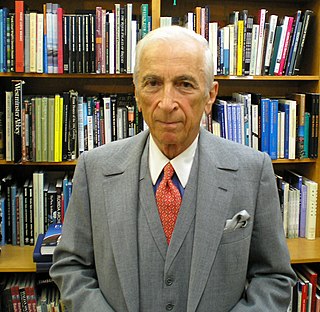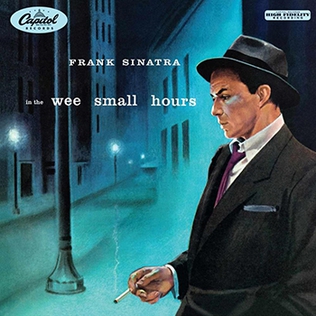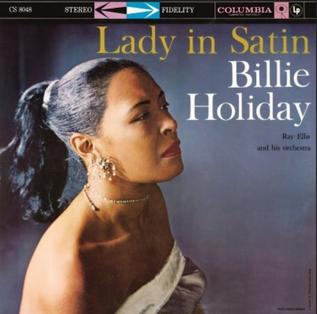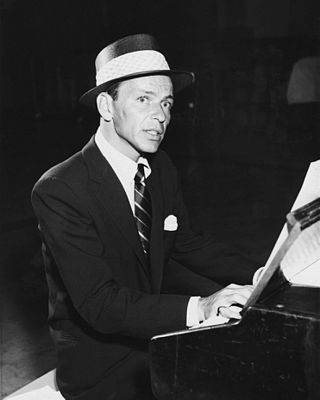
Francis Albert Sinatra was an American singer and actor. Nicknamed the "Chairman of the Board" and later called "Ol' Blue Eyes", he is regarded as one of the most popular entertainers of the mid-20th century. Sinatra is among the world's best-selling music artists with an estimated 150 million record sales.

Ava Lavinia Gardner was an American actress. She first signed a contract with Metro-Goldwyn-Mayer in 1941 and appeared mainly in small roles until she drew critics' attention in 1946 with her performance in Robert Siodmak's film noir The Killers. She was nominated for an Academy Award for Best Actress for her performance in John Ford's Mogambo (1953), and for best actress for both a Golden Globe Award and BAFTA Award for her performance in John Huston's The Night of the Iguana (1964). She was a part of the Golden Age of Hollywood.

Gaetano "Gay" Talese is an American writer. As a journalist for The New York Times and Esquire magazine during the 1960s, Talese helped to define contemporary literary journalism and is considered, along with Tom Wolfe, Joan Didion, and Hunter S. Thompson, one of the pioneers of New Journalism. Talese's most famous articles are about Joe DiMaggio and Frank Sinatra.

In the Wee Small Hours is the ninth studio album by American vocalist Frank Sinatra. It was released in April 1955 by Capitol and produced by Voyle Gilmore with arrangements by Nelson Riddle. The album's songs deal with themes such as introspection, melancholy, lost love, failed relationships, depression and night life. The cover artwork reflects these themes, portraying Sinatra alone at night on an eerie and deserted city street awash in blue-tinged street lights.

"One for My Baby (and One More for the Road)" is a song written by Harold Arlen and Johnny Mercer for the movie musical The Sky's the Limit (1943) and first performed in the film by Fred Astaire.

Lady in Satin is an album by the jazz singer Billie Holiday released in 1958 on Columbia Records, catalogue CL 1157 in mono and CS 8048 in stereo. It is the penultimate album completed by the singer and last released in her lifetime. The original album was produced by Irving Townsend and engineered by Fred Plaut.

American vocalist Frank Sinatra recorded 59 studio albums and 297 singles in his solo career, spanning 54 years. Sinatra signed with Columbia Records in 1943; his debut album The Voice of Frank Sinatra was released in 1946. Sinatra would achieve greater success with Capitol and Reprise Records, the former of which he released his final two albums on—Duets and Duets II. Eight compilation albums under Sinatra's name were released in his lifetime, with more albums released following his death in 1998.

Where Are You? is the thirteenth studio album by Frank Sinatra.
"I Had the Craziest Dream" is a popular song which was published in 1942. The music was written by Harry Warren, the lyrics by Mack Gordon.
"I Wanna Be Around" is a popular song. In the lyrics, the singer declares that he "wants to be around" when the woman who spurned him inevitably gets her heart broken. The song is credited to Sadie Vimmerstedt and Johnny Mercer.
"Put Your Dreams Away (For Another Day)" is a 1943 song written by Ruth Lowe, Paul Mann, and Stephan Weiss.

"Frank Sinatra Has a Cold" is a profile of Frank Sinatra written by Gay Talese for the April 1966 issue of Esquire. The article is one of the most famous pieces of magazine journalism ever written and is often considered not only the greatest profile of Frank Sinatra but one of the greatest celebrity profiles ever written. The profile is one of the seminal works of New Journalism and is still widely read, discussed and studied. In the 70th anniversary issue of Esquire in October 2003, the editors declared the piece the "Best Story Esquire Ever Published". Vanity Fair called it "the greatest literary-nonfiction story of the 20th century".

Frank Sinatra's musical career began in the swing era in 1935, and ended in 1995, although he did briefly retire in 1971, before returning to music in 1973. Sinatra is one of the most influential music artists of the 20th century, and has sold 150 million records worldwide, making him one of the best-selling music artists of all-time. Rock critic Robert Christgau called Sinatra "the greatest singer of the 20th century". In addition to his music career, Sinatra was also a successful film actor, having won the Academy Award for Best Supporting Actor for his role as Private Angelo Maggio in From Here to Eternity (1953).
"Mama Will Bark" is a novelty song written by Dick Manning and recorded as a duet between Frank Sinatra and Dagmar in 1951.
Vincent Ned DeRosa was an American hornist who served as a studio musician for Hollywood soundtracks and other recordings from 1935 until his retirement in 2008. Because his career spanned over 70 years, during which he played on many film and television soundtracks and as a sideman on studio albums, he is considered to be one of the most recorded brass players of all time. He set "impeccably high standards" for the horn, and became the first horn for Henry Mancini, Lalo Schifrin, Alfred Newman, and John Williams, among others, with Williams calling him "one of the greatest instrumentalists of his generation." DeRosa contributed to many of the most acclaimed albums of the 20th century, including some of the biggest-selling albums by artists as diverse as Frank Sinatra, Barry Manilow, Frank Zappa, Boz Scaggs, Ella Fitzgerald, Harry Nilsson, Stan Kenton, Henry Mancini, The Monkees, Sammy Davis Jr., and Mel Tormé.

Here's Lee Morgan is an album by jazz trumpeter Lee Morgan originally released on the Vee-Jay label. It was recorded on February 8, 1960, and features performances by Morgan with Clifford Jordan, Wynton Kelly, Paul Chambers and Art Blakey.

Portrait of Sinatra: Columbia Classics is a compilation album by Frank Sinatra, released in 1997. This compilation was later re-released in 2010 as The Essential Frank Sinatra: The Columbia Years.

"Take My Love" is a 1950 pop song co-written and recorded by Frank Sinatra. The song was released as a Columbia Records A side single.

"Peachtree Street" is a 1950 song co-written and recorded by Frank Sinatra in a duet with Rosemary Clooney. The song was released as a Columbia Records single.

"Sheila" is a 1953 song recorded and co-written by Frank Sinatra. The song was released as a single on Columbia Records.
















